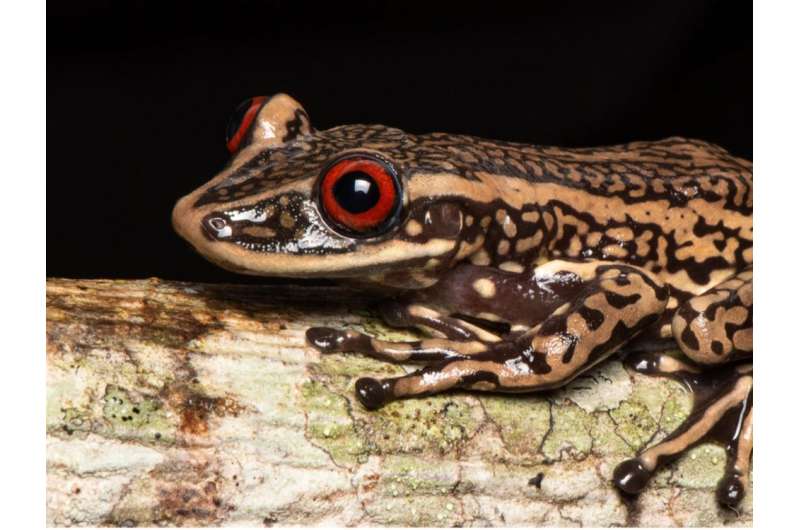This article has been reviewed according to Science X's editorial process and policies. Editors have highlighted the following attributes while ensuring the content's credibility:
fact-checked
peer-reviewed publication
trusted source
proofread
Habitat split may impact disease risk in amphibians and other vertebrates

Habitat split is a common event in the environment that occurs when different classes of natural habitats, such as forests and water, are disconnected. As a consequence, the movement of organisms between these environments is disrupted, which can be particularly harmful to species with both an aquatic and terrestrial life stage, like amphibians.
Human disturbances, such as logging of forests and agricultural expansion, are leading causes of this environmental fragmentation and have important implications for the spread of diseases in wildlife communities.
According to new research led by Penn State Associate Professor of Biology Gui Becker, published in January 2023 in Biological Reviews, habitat split has a significant impact on amphibian disease immunity, likely due to changes in the composition of the microbes living on the amphibians, disruptions to normal immune system development, and increased stress. With this knowledge, Becker's team aims to discover new ways to help reduce disease risk.
"We propose several mechanisms by which habitat split could impact different branches of wildlife's immune systems," Becker said, "but also propose that targeted habitat-restoration strategies aiming to connect multiple classes of natural habitats (e.g., terrestrial–freshwater, terrestrial–marine, marine–freshwater) could enhance vertebrate immune system responses."
The Biological Reviews article comes on the heels of recent research published by Becker, Penn State postdoctoral scholar Daniel Medina, and a group of international collaborators in the December 2022 issue of Animal Microbiome.
In that paper, Becker and colleagues compared the microbes that live on the skin—skin microbiomes—of 43 threatened and 90 non-threatened amphibian species, and discovered that amphibian species threatened by extinction have fewer species of microbes living on their skin. Previous work by Becker, found that resident microbes on skin are an important component of the frog innate immune system and can impact disease outcomes. Therefore, the authors conclude that the amphibians threatened by extinction may have weaker disease defenses, due to their lower skin microbiome diversity. Overall, these results suggest that amphibian skin microbiomes could be an important factor in species conservation.
Together, these articles highlight potential avenues for protecting global diversity, but further research is needed to develop successful microbial management strategies from scales ranging from individual hosts to ecosystems, the researchers said.
"We have been radio-tracking amphibians across landscapes with varying levels of habitat split, manipulating their microbiomes, looking at immune gene expression, quantifying stress hormone levels," Becker explained, "and I think these field studies will help us dive into the mechanisms of how landscape configuration impacts host resistance to pathogens."
Understanding factors that contribute to population resilience is particularly critical as animals in the wild are faced with increasing climate, pathogen, and anthropogenic stressors, such as pollution and habitat split, said the researchers.
"Conserving and managing microbial diversity across wildlife habitats are important to environmental and ecosystem sustainability efforts as the climate changes in significant ways," said Seth Bordenstein, director of the Penn State Microbiome Center. "Becker's team is shining a bright light on the crucial need to holistically understand how human- and climate-induced habit changes will have major ripple effects on microbial and animal diversity and health. This work is one of the major types of interdisciplinary research that many of the Center investigators are engaged in."
More information: C. Guilherme Becker et al, Habitat split as a driver of disease in amphibians, Biological Reviews (2023). DOI: 10.1111/brv.12927
Sasha E. Greenspan et al, Low microbiome diversity in threatened amphibians from two biodiversity hotspots, Animal Microbiome (2022). DOI: 10.1186/s42523-022-00220-w
Journal information: Biological Reviews
Provided by Pennsylvania State University

















